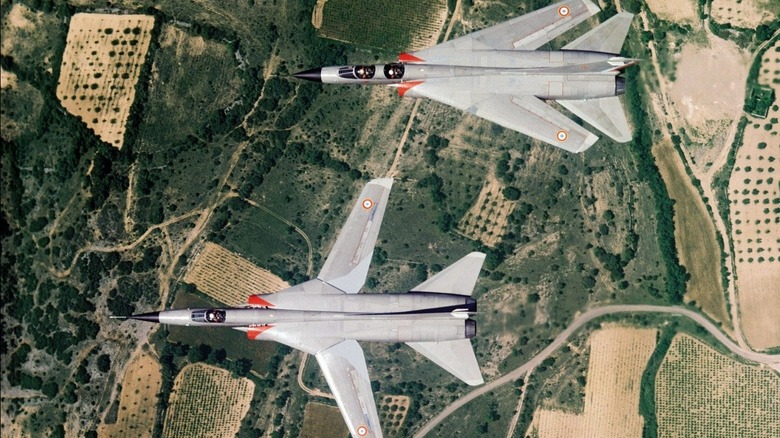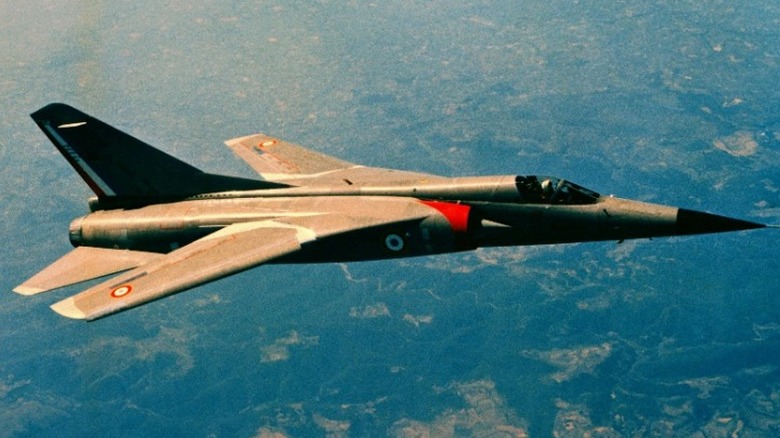Mirage G: The Impressive Turbofan Aircraft With Moving Wings
The Mirage G was a French prototype aircraft that ultimately never made it into military service. The jet, powered by a potent Pratt & Whitney/Snecma FF 306 turbofan, revolutionized the idea of the variable geometry wing. The concept wasn't entirely new when Dassault Aviation put its Mirage G aircraft on display for the first time at the Paris Air Show in May 1967.
"A variable-sweep wing imitates nature," Joe Pappalardo, writing for the Smithsonian Magazine, notes. "To glide or slow down, birds extend their wings; to speed up, they tuck them close."
In 1972, Grumman Aerospace introduced the F-14 Tomcat (an aircraft that would feature in 1986's "Top Gun"). This jet followed the Bell X-5, a test aircraft used by NASA to evaluate wing angles, and was the first human-made aircraft that could adjust its wing sweep while flying. The X-5 took technological inspiration from the Messerschmitt P 1101, a seized Nazi aircraft captured by U.S. forces in 1945 that never actually took to the skies. The P 1101, unlike the Mirage G and later aircraft, could only adjust its wing sweep prior to taking off.
The Mirage G reached Mach 2.1 with its maximum wing sweepback (70 degrees) on December 8, 1967, while piloted by Jean Coureau. The project was eventually shelved in 1968, but the breakthrough that this mobile wing represented would lead to a vast new wrinkle in the design of future aircraft, both in France and beyond.
Later updates were birthed directly from the success of this wing design
With the original Mirage G still making test flights, Dassault Aviation's Jean-Claude Brabant began work on a new model that supported two engines (instead of the first craft's single turbofan). Dassault Aviation notes that the G4 would "be capable of carrying either a nuclear weapon or a large quantity of conventional weapons. The main launching mode for the nuclear weapon is to be low-altitude launching, at high subsonic speeds to begin with, and later at low supersonic speeds." This was according to technical specifications set out by the French Air Force's Materials Program Bureau in October 1968.
Powered by two Snecma Atar 9K-50 engines, the newer Mirage iteration would be blisteringly fast (achieving a top speed of Mach 2.2), and serve in strike reconnaissance and remote electronic warfare operations. Once again, the project hit roadblocks, and eventually the Mirage G8 came to the forefront of French aerial design.
The Mirage G8 02 made its first flight in 1972, and a year later, the craft was piloted by Jean-Marie Saget — achieving the highest flight speed ever recorded in Western Europe (Mach 2.34 at an altitude of 42,000 feet). The variable wing design, alongside other enhancements like high-lift inclusions, allowed Dassault to create a formidable strike fighter that could scream through the air.

